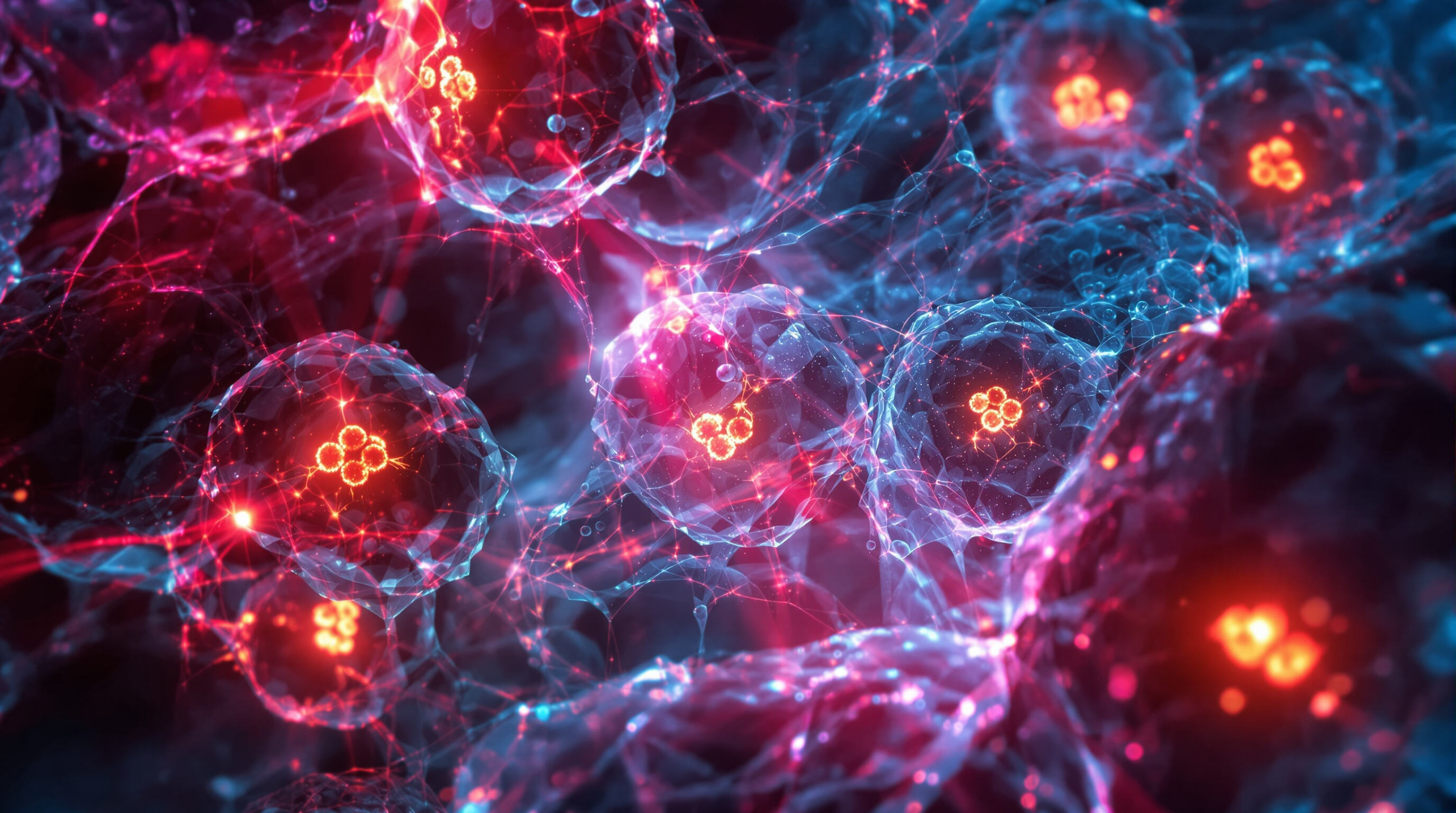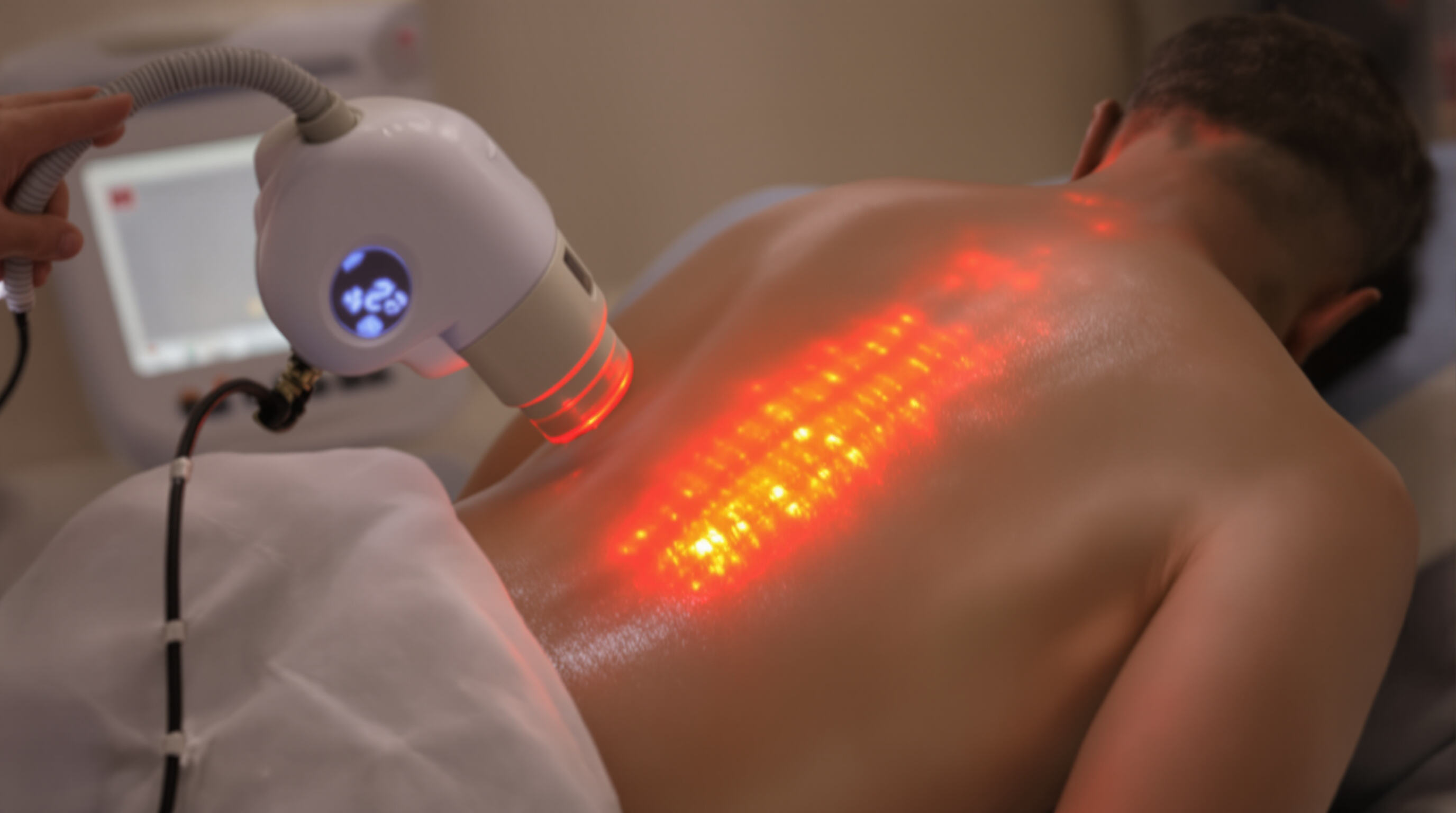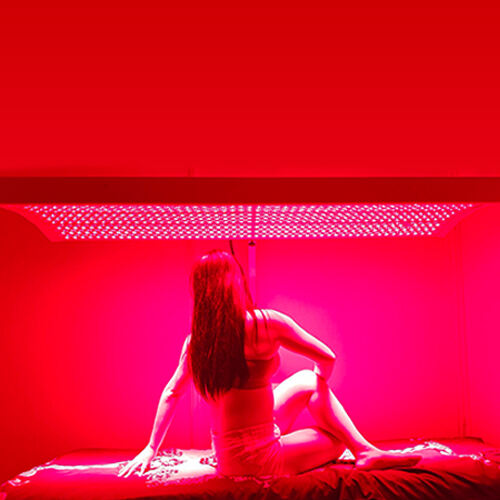Understanding Red Light and Infrared Therapy: Key Principles
What is red light therapy?
Red light therapy uses wavelengths between 630–660 nm in the visible spectrum to stimulate cellular repair. It primarily targets skin and superficial tissues, enhancing collagen production and reducing oxidative stress through mitochondrial activation. Clinical studies show 85% of users experience measurable improvements in skin texture within 8 weeks (2024 Photobiology Review).
Infrared light therapy: mechanisms and applications
Infrared therapy uses longer wavelengths (800–1,200 nm), which are invisible and penetrate 5–10 cm into muscles and joints. It generates gentle heat that improves circulation and reduces inflammation. Key applications include:
- Chronic muscle pain management
- Post-surgical tissue repair
- Enhanced lymphatic drainage
Differences between red light and infrared therapy
| Parameter | Red Light Therapy | Infrared Therapy |
|---|---|---|
| Wavelength Range | 630–660 nm (visible) | 800–1,200 nm (invisible) |
| Tissue Penetration | 1–5 mm | 5–100 mm |
| Primary Mechanism | Photobiomodulation | Thermal modulation |
| Clinical Use Cases | Skin rejuvenation | Deep tissue recovery |
This wavelength distinction explains why 72% of rehabilitation centers combine both modalities (2023 Clinical Therapeutics Study).
Wavelength and tissue penetration depth in photobiomodulation
Shorter red light wavelengths (630 nm) act on epidermal layers, activating fibroblasts for collagen synthesis. Near-infrared (850 nm) reaches deeper structures like synovial fluid and joint capsules, increasing ATP production by 150–200% in deep tissues (Journal of Biophotonics, 2024). Due to lower scatter, infrared light penetrates more effectively, enabling broader therapeutic impact.
Cellular Mechanisms: How Combined Therapy Enhances Mitochondrial Function

Therapeutic Interventions Targeting Mitochondria
When it comes to improving how mitochondria work, photobiomodulation does something pretty cool by activating cytochrome c oxidase, which is basically one of those important enzymes sitting right there in the electron transport chain. Studies show that when cells get hit with red light waves between 630 and 670 nanometers or near infrared around 810 to 850 nanometers, they actually produce about 20 to 30 percent more ATP if we're talking about the right dose levels according to Modena and colleagues back in 2023. What happens here? Well, basically the light helps kick out this stuff called inhibitory nitric oxide that was blocking things up, so the cell can breathe again properly. There's also something interesting going on with what's known as the Arndt-Schulz effect. At lower to moderate energy levels, say somewhere between 1 and 10 joules per square centimeter, metabolism gets a nice boost. But go too far beyond that range and the benefits start to fade away instead of continuing to grow.
Cellular Mechanisms of Red Light and Infrared Therapy
Red light boosts ATP synthesis and reduces oxidative stress markers like reactive oxygen species (ROS) in superficial tissues. Infrared penetrates 4–10 cm, stimulating mitochondrial biogenesis and repair in muscles and joints. Studies using 850 nm light show 72% faster fibroblast proliferation compared to controls, accelerating healing in deeper tissues.
How Does Red Light Therapy Work in Synergy with Infrared?
The combination creates a two-phase effect:
- Red light (630 nm) primes mitochondrial enzymes in skin and shallow layers.
- Infrared (850 nm) activates heat-sensitive ion channels and boosts blood flow to deeper structures.
This synergy increases cellular ATP reserves by 25% compared to single-wavelength treatments (2019 mitochondrial efficiency study).
Use of Near-Infrared Light in Photobiomodulation for Enhanced ATP Production
Near-infrared (800–900 nm) reaches bone and muscle, stimulating CCO in osteoblasts and satellite cells. ATP levels remain elevated for 48–72 hours post-treatment, supporting continuous tissue repair. Clinical trials in sports medicine report 40% faster muscle recovery with combined 670 nm red and 850 nm infrared light, confirming their complementary actions.
Pain Relief and Deep Tissue Recovery with Combined Red and Infrared Light

Red Light Therapy for Chronic Pain Relief
Low level red light therapy seems to help with chronic pain because it affects those inflammatory chemicals in the body like IL-6 and TNF alpha that cause so much trouble for people with ongoing discomfort. Back in 2007, researchers at the University of Texas did a study where participants used red light regularly and saw about a third less back pain over time. Many occupational therapists have noticed their patients getting better range of motion and less stiffness when they incorporate red light into treatment plans. The improvement probably comes from better blood flow to affected areas plus some kind of cell repair process happening underneath the skin that we can't see but definitely feels good.
Infrared Heating and Deep Tissue Recovery
Infrared penetrates up to 7 inches into tissues, targeting musculoskeletal injuries and chronic inflammation. It stimulates vasodilation, improving oxygen delivery and metabolic waste removal. Research indicates a 24% increase in collagen synthesis in impaired tissues (Therabody, 2023), accelerating recovery in tendinopathy and arthritis.
Case Study: Chronic Back Pain Reduction Using Combined Wavelengths
A 2023 clinical observation followed 45 patients with chronic back pain using dual-wavelength devices (650 nm red + 850 nm infrared). After 12 sessions, 67% reported at least 50% pain reduction, with MRI scans showing reduced lumbar disc inflammation. Red light addresses superficial inflammation, while infrared targets deeper structural damage.
Scientific Trends in Non-Invasive Pain Management Using Light Therapy
Over 70% of recent photobiomodulation studies focus on multi-wavelength approaches. A meta-analysis of 17 trials found combined therapy reduced tendon pain scores by 41% compared to single-wavelength devices. Researchers now prioritize protocols that balance superficial healing (red) with deep neuromuscular recovery (infrared) to address complex pain pathways.
Muscle Recovery, Athletic Performance, and Inflammation Reduction
Red Light Therapy for Muscle Recovery Post-Exercise
Red light enhances post-exercise recovery by stimulating mitochondrial ATP production. A 2022 meta-analysis of 23 trials showed athletes using 660 nm light reduced delayed-onset muscle soreness by 19% compared to placebo, with improved range of motion within 24 hours.
Infrared Heating and Its Role in Reducing Muscle Inflammation
Infrared (750–1200 nm) reduces exercise-induced inflammation through targeted vasodilation, increasing blood flow by 22% to damaged tissues. It lowers pro-inflammatory cytokines like IL-6 by 34% while preserving adaptive inflammation essential for muscle remodeling.
Clinical Evidence on Recovery Time Reduction in Athletes
A 2023 analysis of 1,200 athletes found combined red/infrared protocols enabled a 27% faster return to peak performance. Treated subjects showed 41% lower creatine kinase and 33% reduced lactate dehydrogenase activity post-marathon, indicating accelerated cellular repair.
Optimizing Athletic Performance with Combined Photobiomodulation
Dual-wavelength devices (630 nm + 850 nm) activate mTOR pathways for protein synthesis and increase heat shock proteins by 28%. In a 12-week trial, NCAA basketball players using this approach improved vertical jump performance by 8.2%, demonstrating tangible benefits for power-based training.
Skin Health, Collagen Production, and Anti-Aging Benefits of Red Light Therapy
Red Light Therapy for Skin Health and Anti-Aging
Red light therapy activates fibroblasts to boost collagen synthesis. A 2013 Journal of Cosmetic and Laser Therapy study found a 30% improvement in skin texture and wrinkle depth after eight weeks of treatment. It also repairs photodamaged skin, improves collagen density, and reduces hyperpigmentation and age-related texture changes.
Stimulating Collagen Production with Red and Infrared Wavelengths
Red light (630–700 nm) targets epidermal fibroblasts, while near-infrared (800–880 nm) reaches subcutaneous tissue, increasing mitochondrial ATP output. This dual action enhances collagen synthesis by up to 31% in clinical settings, as shown in dermal thickness studies.
Wound Healing and Tissue Repair: A Photobiomodulation Perspective
Photobiomodulation accelerates wound healing by improving microcirculation and reducing oxidative stress. Patients using combined red and infrared therapies experience 40% faster scar recovery compared to untreated groups. By modulating inflammatory cytokines, these wavelengths support tissue regeneration without invasive procedures.
FAQ
Q: What is the primary difference between red light and infrared therapy?
A: The primary difference lies in their wavelength ranges and penetration depths. Red light therapy uses shorter wavelengths (630–660 nm) that penetrate superficial tissues, while infrared therapy employs longer wavelengths (800–1,200 nm) that reach deeper tissues like muscles and joints.
Q: How does red light therapy benefit the skin?
A: Red light therapy enhances collagen production and reduces oxidative stress, improving skin texture, repairing photodamaged skin, and reducing wrinkle depth, as shown in clinical studies.
Q: Can infrared therapy help with chronic pain?
A: Yes, infrared therapy penetrates deep tissues, reducing inflammation and promoting healing, which can alleviate chronic pain, improve circulation, and enhance tissue repair.
Q: What are the synergistic effects of using both red and infrared light therapies?
A: Combining these therapies results in a two-phase effect where red light primes surface tissues, and infrared activates deeper structures, increasing cellular ATP reserves by up to 25% compared to single-wavelength treatments.
Table of Contents
- Understanding Red Light and Infrared Therapy: Key Principles
- Cellular Mechanisms: How Combined Therapy Enhances Mitochondrial Function
- Pain Relief and Deep Tissue Recovery with Combined Red and Infrared Light
- Muscle Recovery, Athletic Performance, and Inflammation Reduction
- Skin Health, Collagen Production, and Anti-Aging Benefits of Red Light Therapy

 EN
EN








































